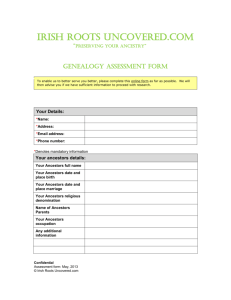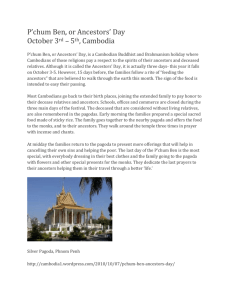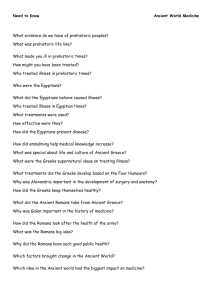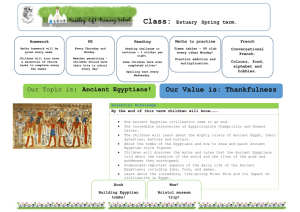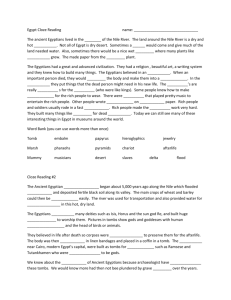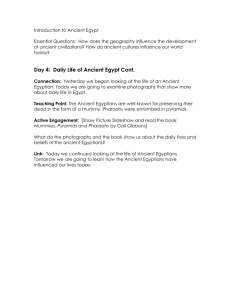File
advertisement
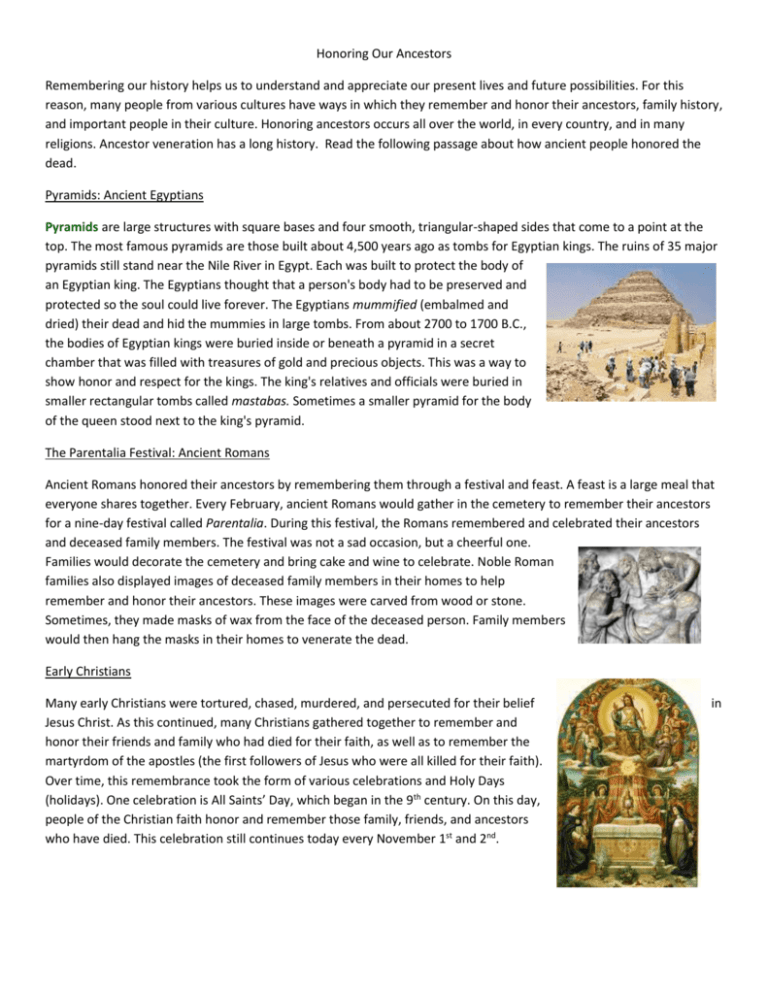
Honoring Our Ancestors Remembering our history helps us to understand and appreciate our present lives and future possibilities. For this reason, many people from various cultures have ways in which they remember and honor their ancestors, family history, and important people in their culture. Honoring ancestors occurs all over the world, in every country, and in many religions. Ancestor veneration has a long history. Read the following passage about how ancient people honored the dead. Pyramids: Ancient Egyptians Pyramids are large structures with square bases and four smooth, triangular-shaped sides that come to a point at the top. The most famous pyramids are those built about 4,500 years ago as tombs for Egyptian kings. The ruins of 35 major pyramids still stand near the Nile River in Egypt. Each was built to protect the body of an Egyptian king. The Egyptians thought that a person's body had to be preserved and protected so the soul could live forever. The Egyptians mummified (embalmed and dried) their dead and hid the mummies in large tombs. From about 2700 to 1700 B.C., the bodies of Egyptian kings were buried inside or beneath a pyramid in a secret chamber that was filled with treasures of gold and precious objects. This was a way to show honor and respect for the kings. The king's relatives and officials were buried in smaller rectangular tombs called mastabas. Sometimes a smaller pyramid for the body of the queen stood next to the king's pyramid. The Parentalia Festival: Ancient Romans Ancient Romans honored their ancestors by remembering them through a festival and feast. A feast is a large meal that everyone shares together. Every February, ancient Romans would gather in the cemetery to remember their ancestors for a nine-day festival called Parentalia. During this festival, the Romans remembered and celebrated their ancestors and deceased family members. The festival was not a sad occasion, but a cheerful one. Families would decorate the cemetery and bring cake and wine to celebrate. Noble Roman families also displayed images of deceased family members in their homes to help remember and honor their ancestors. These images were carved from wood or stone. Sometimes, they made masks of wax from the face of the deceased person. Family members would then hang the masks in their homes to venerate the dead. Early Christians Many early Christians were tortured, chased, murdered, and persecuted for their belief Jesus Christ. As this continued, many Christians gathered together to remember and honor their friends and family who had died for their faith, as well as to remember the martyrdom of the apostles (the first followers of Jesus who were all killed for their faith). Over time, this remembrance took the form of various celebrations and Holy Days (holidays). One celebration is All Saints’ Day, which began in the 9th century. On this day, people of the Christian faith honor and remember those family, friends, and ancestors who have died. This celebration still continues today every November 1st and 2nd. in

